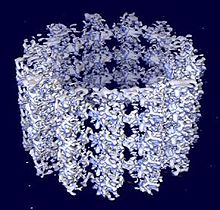
[AUTHOR’S NOTE: The bulk of the original content of this article was published at Examiner.com when I wrote as the Atlanta Creationism Examiner. Unlike previous articles from that source which were only re-formatted and lightly edited, new material has been added that has developed since the article was first published.]
Microtubules of the brain
How does our brain really work? Are brain cells special? How do brain cells store memories? Computers are modeled after the human brain, and like humans, they have both short-term and long-term memory.
For short-term memory, computer allocates space in a storage cache to “remember” information…for example, a calculator application accepts input from a user and must remember the numerical values entered, the operand (in order to know whether to add, subtract, multiply, divide, etc.) and then must store the result of the operation to be displayed as feedback. However, when the application ends or the computer is turned off, the short-term memory is wiped out. Lost forever.
As far as long-term memory is concerned for computers, a storage device is required, and the information is literally written to a computer chip, hard drive, flash drive, or some other permanent medium. If you store your data “in the cloud” it only means you’re using storage provided by someone else, which might be convenient, but not very secure. Literally, somewhere there must be a physical device which stores your information to be recalled and reused at a later date.
So with that in mind, how does a human brain record long-term memories?
If we simply assume, for the sake of argument, that short-term memories are merely chemical reactions in our physical brain cells (because that’s probably how a neuroscientist would describe them, but that isn’t the point of this article), it doesn’t answer the question of how we remember past events from thirty, forty, or more years ago. Where, and how, are those memories stored?
One of the most interesting and brilliant movies I’ve ever watched was called Memento.
A brief summary of the plot: due to a severe blow to the head, the protagonist’s brain was injured to the point where he could no longer form new long-term memories. Any distraction that disrupted his attention span would cause the hero to forget where he was, what he’d been doing, and why he was there, but he was determined to hunt down (and kill) his wife’s murderer. Because his brain no longer worked normally but the protagonist remained very intelligent, he solved his long-term memory problem by tattooing clues to the identity of the the killer on his own body, so he couldn’t forget them.
If you haven’t seen this movie, I highly recommend it. Director Christopher Nolan has made a number of excellent movies, but in my opinion, this is his very best work.
And here is the problem: I have no tattoos. How did my brain record and then recall the details of this movie so vividly, when at least a decade has passed since I last watched it? Exactly where, in my brain cells, do my memories live?
Anesthesiologist Stuart Hameroff worked with Sir Roger Penrose while serving as associate director of Consciousness Studies at the University of Arizona in Tucson to develop a theory of consciousness. They have asserted that the mind is not simply a by-product of the biological activity of the human brain but something more.
Hameroff’s research focused on microscopic structures in brain and nerve cells called microtubules. Their claim to have discovered quantum vibrations in the microtubule structures in our brains have been published as a result of their work toward a theory of consciousness.
Dr. Hameroff said in an interview:
“The inside of the brain and nerve cells are comprised of girders or cylindrical structures called microtubules that self assemble to form the shape of a cell. They are the nervous system of a cell and process information internally to organize what happens within each cell and also how cells interact with other cells. These microtubules are actually very well designed as computational devices.”
Not only has our brain been compared to an organic computer, Dr. Hameroff has characterized each microtubule as a quantum micro-processor as he asks this pointed question: is DNA really a quantum computer? This prompts me to ask another interesting question of my own: like creation without a creator, can intricate and extraordinarily complex design really exist without a designer?
Primary source: The Day I Died, a BBC documentary.

Speak Your Mind